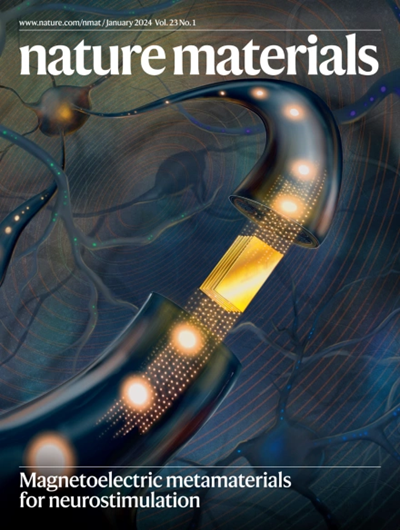Structural constraint integration in a generative model for the discovery of quantum materials.
IF 38.5
1区 材料科学
Q1 CHEMISTRY, PHYSICAL
引用次数: 0
Abstract
Billions of organic molecules have been computationally generated, yet functional inorganic materials remain scarce due to limited data and structural complexity. Here we introduce Structural Constraint Integration in a GENerative model (SCIGEN), a framework that enforces geometric constraints, such as honeycomb and kagome lattices, within diffusion-based generative models to discover stable quantum materials candidates. SCIGEN enables conditional sampling from the original distribution, preserving output validity while guiding structural motifs. This approach generates ten million inorganic compounds with Archimedean and Lieb lattices, over 10% of which pass multistage stability screening. High-throughput density functional theory calculations on 26,000 candidates shows over 95% convergence and 53% structural stability. A graph neural network classifier detects magnetic ordering in 41% of relaxed structures. Furthermore, we synthesize and characterize two predicted materials, TiPd0.22Bi0.88 and Ti0.5Pd1.5Sb, which display paramagnetic and diamagnetic behaviour, respectively. Our results indicate that SCIGEN provides a scalable path for generating quantum materials guided by lattice geometry.量子材料发现生成模型中的结构约束集成。
数以十亿计的有机分子已经被计算生成,但由于有限的数据和结构复杂性,功能性无机材料仍然稀缺。在这里,我们介绍了生成模型中的结构约束集成(SCIGEN),这是一个框架,它在基于扩散的生成模型中强制执行几何约束,如蜂窝和kagome晶格,以发现稳定的量子材料候选者。SCIGEN允许从原始分布中有条件采样,在指导结构主题的同时保持输出的有效性。这种方法产生了1000万种具有阿基米德晶格和利布晶格的无机化合物,其中超过10%通过了多级稳定性筛选。高通量密度泛函理论计算表明,26000个候选体的收敛性超过95%,结构稳定性超过53%。图神经网络分类器在41%的松弛结构中检测到磁有序。此外,我们还合成并表征了两种预测材料TiPd0.22Bi0.88和Ti0.5Pd1.5Sb,它们分别具有顺磁性和抗磁性。我们的研究结果表明,SCIGEN提供了一种可扩展的路径来生成由晶格几何引导的量子材料。
本文章由计算机程序翻译,如有差异,请以英文原文为准。
求助全文
约1分钟内获得全文
求助全文
来源期刊

Nature Materials
工程技术-材料科学:综合
CiteScore
62.20
自引率
0.70%
发文量
221
审稿时长
3.2 months
期刊介绍:
Nature Materials is a monthly multi-disciplinary journal aimed at bringing together cutting-edge research across the entire spectrum of materials science and engineering. It covers all applied and fundamental aspects of the synthesis/processing, structure/composition, properties, and performance of materials. The journal recognizes that materials research has an increasing impact on classical disciplines such as physics, chemistry, and biology.
Additionally, Nature Materials provides a forum for the development of a common identity among materials scientists and encourages interdisciplinary collaboration. It takes an integrated and balanced approach to all areas of materials research, fostering the exchange of ideas between scientists involved in different disciplines.
Nature Materials is an invaluable resource for scientists in academia and industry who are active in discovering and developing materials and materials-related concepts. It offers engaging and informative papers of exceptional significance and quality, with the aim of influencing the development of society in the future.
 求助内容:
求助内容: 应助结果提醒方式:
应助结果提醒方式:


